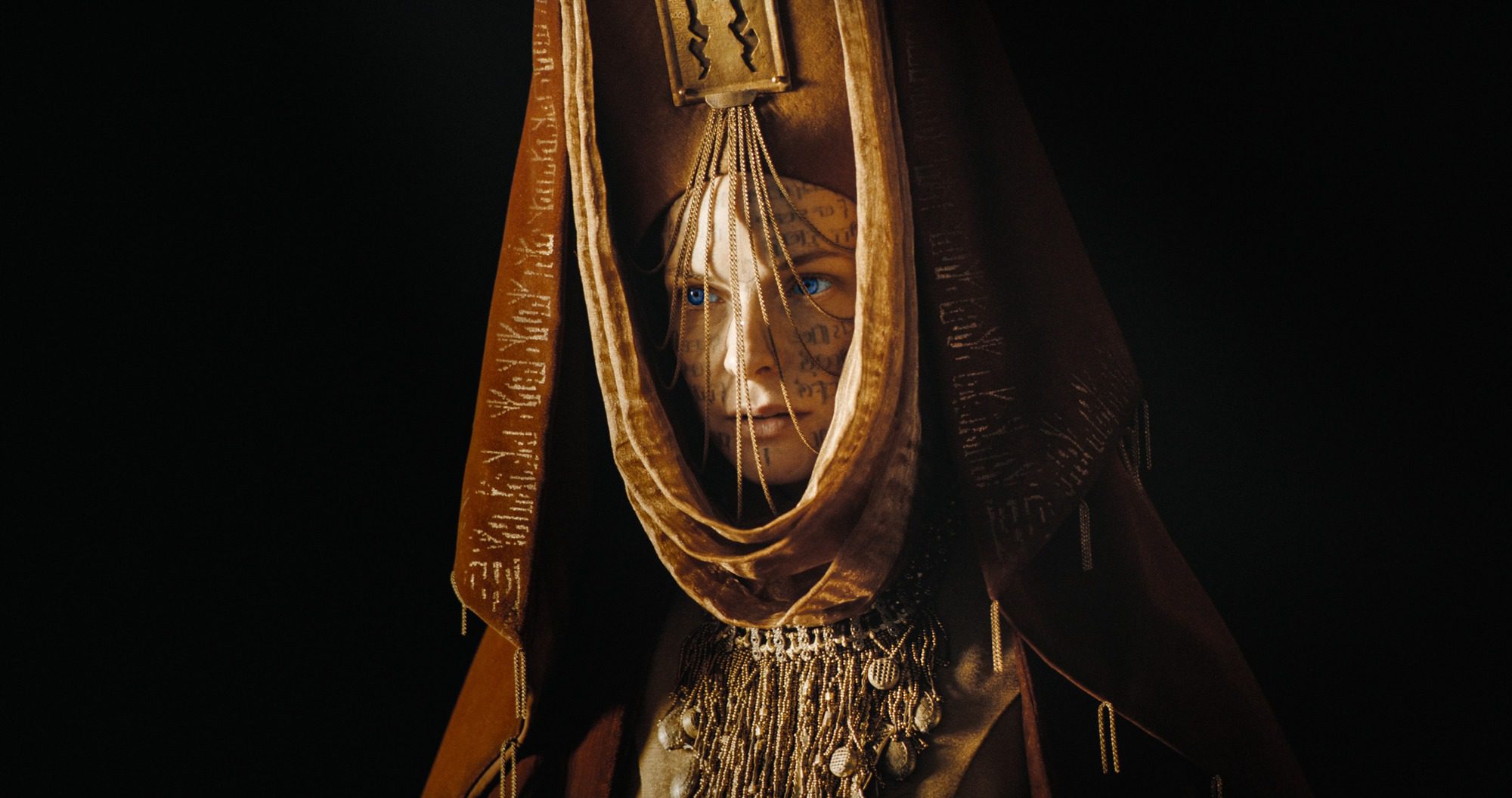The first adaptation of Frank Herbert’s seminal novel series, the films Dune and Dune: Part Two, mark significant milestones in modern cinema. With the aim of highlighting key events and avoiding overly broad interpretations, particularly during the two-year gap between the two releases, Dune left many viewers feeling bored due to its slow pacing, minimal dialogue, limited action sequences, and sparse character development—elements typical of science fiction films that often prioritize grandeur. However, upon the release of Dune: Part Two, many audience members were deeply moved, and began to understand the events depicted in the first film. The sequel delivered a cinematic experience that was both entertaining and emotionally resonant, further enhancing the artistic value of the narrative and allowing viewers to “see more.” Currently, the film is generating buzz worldwide, with continuous IMAX screenings selling out. Many people recognize that Dune: Part Two is more entertaining than its predecessor.
However, if we only consider both films from a purely entertainment perspective, the story of the “chosen hero,” “the one who was selected,” or “the struggle against evil” tends to simplify the narrative. It’s not a trivial matter, as Herbert’s foundational work is regarded as one of the most outstanding science fiction masterpieces of all time.
This article will analyze the character development of Paul Atreides as he transforms into Kwisatz Haderach—the “chosen one” in the universe of Dune. First, it’s important to discuss character development in the cinematic adaptations of Denis Villeneuve, as well as the Bene Gesserit and their intricate plans.
Character Development in Science Fiction
Many viewers wonder why there is a focus on futuristic settings when interstellar travel is not far off, yet the world of Dune lacks advanced technology and industrial advancements. This is because this universe is devoid of robots or AI entities, contrasting with other science fiction films.
There are reasons for this. In the original work, there’s an event that takes place over 4,000 years before the events of Dune: the Butlerian Jihad. This was a widespread uprising aimed at eliminating machines and artificial intelligence that had begun to dominate human civilization, leading to significant restrictions on the creation of intelligent machines, as noted in the sacred texts of the Dune universe: “Man must not create a machine in his own image.” Frank Herbert took this event to establish the world within Dune, as for him, science fiction was merely a tool to explore a world closely resembling human society, with deep human values and intricate political, social, and cultural dynamics.
Denis Villeneuve—the director—has effectively conveyed this essence of Dune. He is one of the few directors with a distinctive style in the realm of contemporary science fiction. Prior to Dune, his works like Arrival (2016) and Blade Runner 2049 (2017) received multiple awards and shared a common theme: as technology advances, humanity sinks deeper into its own existential crises.
The world in Denis Villeneuve’s works evokes a strong sci-fi sensation: advanced technology, space travel, and humanity’s desperate struggle against the harsh realities of survival. The plot of Arrival kicks off with mysterious alien ships descending onto Earth. The world of Blade Runner 2049 revolves around the pursuit of rogue replicants. The conflict in Dune centers on the battle for control over a resource-rich planet, with factions ready to fight for its preservation. In all three of these science fiction narratives, Denis Villeneuve artfully employs cinematic techniques to evoke a profound connection between the audience and the film’s world, allowing viewers to feel the existence of the characters as they navigate through their harsh realities.
Thus, when the humanity of the characters is placed on the balance, recognizing that they are merely cogs in a vast machine, the viewer becomes aware of the struggles faced by each character, as they escape from their predestined paths to seek autonomy in their destinies. The essence of every character in Dune turns out to be a significant political and power struggle, where everyone is constantly struggling to control their own fate among larger forces, as Duke Leto himself understood when he took command of Arrakis on the Emperor’s orders.
The Bene Gesserit and the Power of Influence
There are many political dialogues and themes that run throughout Dune. One motif underscores humanity’s quest for dominance in a new world while simultaneously emphasizing the value of empathy, human connection, and the deep intricacies of political and cultural dynamics.
Considering the philosophical aspects, culture and religion are two concepts that have developed alongside civilization since its inception. The expansion and necessity of religion have led to the emergence of one of the oldest forms of traditional storytelling: mythological narratives. The more people connect with religious narratives, the more religious groups and beliefs emerge, forming a complex power structure of governance.
By portraying and propagating the legend of the Lisan Al-Ghaib on Arrakis, the Bene Gesserit have skillfully wielded the soft power of tradition and widespread beliefs, creating a mythos that benefits them. In the book, this capability is referred to as the Missionaria Protectiva: sowing the seeds of belief in other planets. If they aim to manipulate the Fremen for resource extraction, the Bene Gesserit have a deeper ulterior motive: to cultivate a belief system that elevates their standing on Arrakis (because in the myths they sow, they always depict the Bene Gesserit as a powerful force). This notion of religious manipulation is explicitly debated by Chani in Dune: Part Two: “This is how we manipulate the faith of the masses.“
The Bene Gesserit must carefully navigate humanity’s tumultuous journey through the shadows because they believe they are paving the way for the emergence of the Kwisatz Haderach—a male Bene Gesserit with the ability to simultaneously see through time, the present, and the future, leading humanity to “the Golden Path”—the path to eternal glory. This weighty responsibility has led to the greatest burdens for Paul Atreides.
Kwisatz Haderach: A Leader or a Tool of Fate?
According to the initial plans, after calculating every potential genetic combination over thousands of years, the Kwisatz Haderach would be the son of Feyd-Rautha, the nephew of House Harkonnen, and the daughter of Lady Jessica, a Bene Gesserit.
However, due to her love for Duke Leto, Lady Jessica defied the Sisterhood and bore him a son—Paul Atreides. As a result, the Kwisatz Haderach emerged earlier than anticipated—a burden that Paul was never prepared to bear. He embodies the archetype of the “chosen one,” “the hero” within the structure of the “Hero’s Journey,” a concept thoroughly explored by Joseph Campbell that has become a staple in storytelling globally. Paul’s introduction and his steps into his heroic journey are reminiscent of Harry Potter, Frodo Baggins, or Katniss Everdeen.
Yet, Paul Atreides is significantly different from other heroes. Herbert’s work challenges and transcends many conventional tropes while simultaneously creating a complex character: he transforms into a hero by reshaping his destiny.
We are introduced to a young Paul Atreides, who is constantly reminded by the teachings of his father to seek out the Fremen, learn their ways, and unite the people of the desert to free Arrakis from oppression. The narrative will delve into Paul’s complexities, including the forces that threaten him, such as the Emperor, the Harkonnens, the Bene Gesserit, and the intricate spiritual relationships he develops with the Fremen. His journey to become a Fremen warrior will face numerous challenges: confronting the Emperor and House Harkonnen for their attempts to exterminate his family, or becoming Lisan Al-Ghaib, the prophesied leader for the Fremen people, whose faith is deeply rooted in the narratives spun by the Bene Gesserit.
Regardless of the obstacles, Paul will also see the futures that accompany his encounters with the Bene Gesserit on Arrakis. To grasp the answer, according to the structure of the “Hero’s Journey,” Paul Muad’Dib Atreides must die to become a new man. This journey must lead him into the darkest cave, where he will conquer his greatest fears and emerge fully formed. “In the cave, I confront the treasures I have always sought,” quoting Joseph Campbell. In Dune, the cave of rebirth is the Water of Life, a substance that enables him to perceive the past, present, and future, in the language of Dune known as prescience.
The state of prescience has entirely changed Paul’s existence throughout the films, shifting him from a reluctant hero to a powerful figure whose very being embodies the essence of humanity’s struggles. Ultimately, he must confront the realities of his power and the choices that define his path. This theme resonates throughout Dune: Part Two, emphasizing the concepts of free will and individual agency within the narrative of Denis Villeneuve’s previous works. By allowing Paul Atreides to embody a notion far greater than his own existence, Dune emerges as a work that imparts profound human values.
The Kwisatz Haderach of the Dune universe, Lisan Al-Ghaib for the Fremen at the end of Dune: Part Two, has become a completely different person from the Paul Atreides at the beginning of his journey. The transformation into a leader, a prophet, and a devoted lover of Chani, signifies a shift in his role from a mere pawn in the game to a powerful force in his own right. The concept of “the chosen one” in Dune will lead to a deeper exploration of this theme.
To delve into the significant risks that come with a charismatic leader like Paul, we quote a notable passage from author Frank Herbert:
“Those who lead bring pain, while superhuman heroes bring destruction. When a leader becomes charismatic, he unwittingly creates a power structure—a pyramid that attracts the masses but can easily collapse under its weight, burdened by the path of each individual.“
Both cinematic adaptations of Denis Villeneuve serve as a foundation for the journey that Paul Atreides has embarked on.























